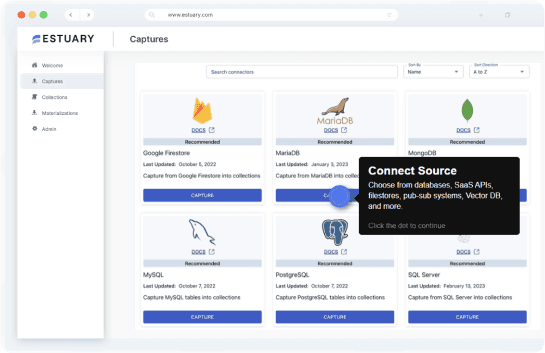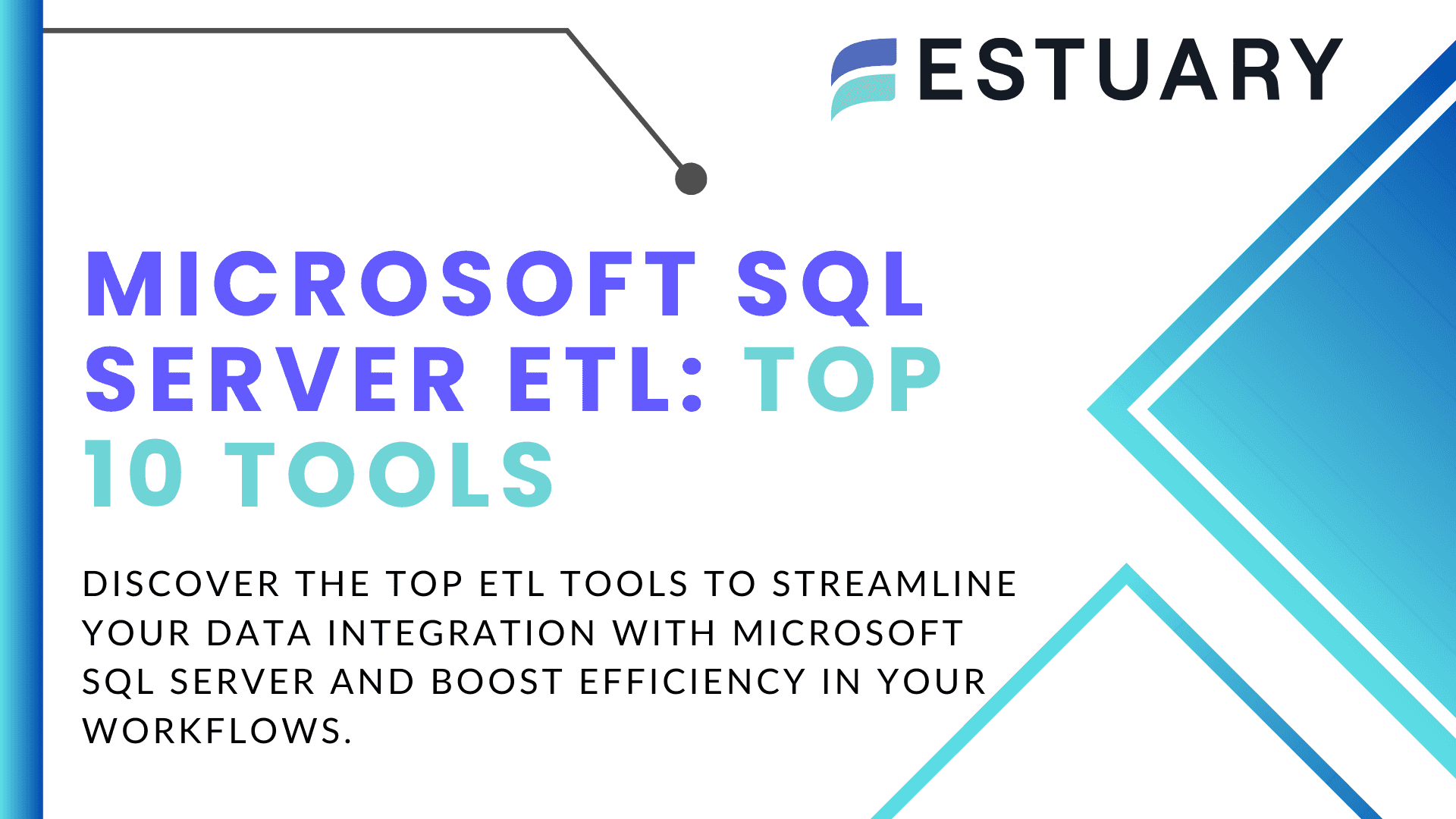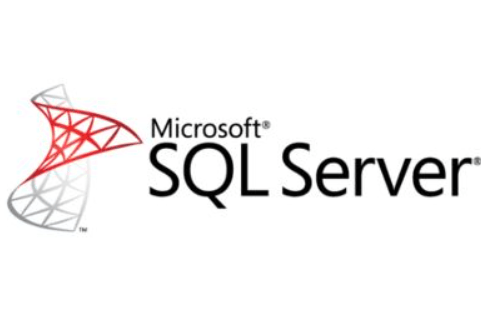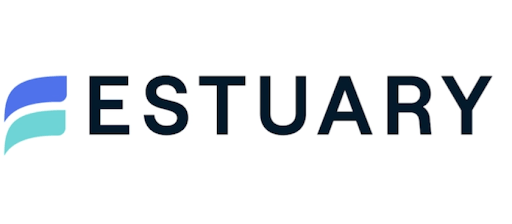Is managing and integrating your data with Microsoft SQL Server becoming a challenge? With data coming from numerous sources and in various formats, efficiently transferring, transforming, and loading it into a central database is often a complex task. This is where ETL tools play an important role, simplifying the process and ensuring your data is clean, organized, and ready for analysis.
For organizations relying on Microsoft SQL Server as their primary database platform, selecting the best ETL tools for SQL Server is crucial to optimize data workflows, improve performance, and ensure seamless data integration. But with so many tools available, how do you choose the one that best fits your needs?
In this blog, we’ll explore the top Microsoft SQL Server ETL tools, focusing on their features, strengths, and how they can streamline your data management processes.
What is Microsoft SQL Server?
Microsoft SQL Server is a robust relational database management system built to help businesses efficiently store, manage, and retrieve structured data. It is widely used for handling various data workloads, from small applications to large enterprise systems. SQL Server supports a wide range of applications, from small single-machine setups to massive enterprise-level databases.
What makes SQL Server a popular choice for enterprises is its reliability, scalability, and robust set of features, which include:
- Data Storage and Management: SQL Server is developed to store large amounts of structured data in relational tables, providing businesses with a secure and efficient platform for their data storage needs.
- High Availability: SQL Server offers features like Always On Availability Groups and Database Mirroring, ensuring minimal downtime and strong disaster recovery options.
- Advanced Security: SQL Server provides enterprise-level security through data encryption, row-level security, and auditing features that help protect sensitive information.
- Performance Optimization: Built-in tools like SQL Server Profiler and Query Optimizer allow for performance tuning to ensure fast query execution even with large datasets.
- Analytics and Reporting: SQL Server integrates seamlessly with tools like SQL Server Reporting Services (SSRS) and Power BI, enabling businesses to generate reports and dashboards for data-driven decision-making.
SQL Server also supports integration with cloud services such as Azure SQL Database, making it flexible for hybrid and cloud-based deployments. As a cornerstone of enterprise IT infrastructure, Microsoft SQL Server (MSSQL) is designed to handle the growing data needs of modern businesses.
What is ETL (Extract, Transform, Load)?
ETL stands for Extract, Transform, and Load, a process that gathers data from different sources, transforms it into a format that meets business requirements, and loads it into a target system like Microsoft SQL Server or a data warehouse.
Each phase of the ETL process plays a important role:
- Extract: This phase involves pulling data from diverse sources such as databases, cloud services, applications, and even flat files. Data may come from structured, semi-structured, or unstructured sources, requiring sophisticated extraction mechanisms to ensure all relevant data is captured.
- Transform: Once extracted, the data is transformed into a format that meets the target system’s requirements. This includes data cleaning (handling missing or inconsistent data), data aggregation, and applying business rules. The transformation phase ensures that the data is standardized, enriched, and ready for analysis.
- Load: After transformation, the data is loaded into the target system, often Microsoft SQL Server in this case. The data can be loaded in real-time, batch, or near-real-time modes depending on business needs. Ensuring optimized loading processes is critical to maintaining the performance and scalability of the SQL Server instance.
Benefits of Using ETL with Microsoft SQL Server
Leveraging ETL processes in conjunction with Microsoft SQL Server (MSSQL) provides businesses with numerous advantages. These benefits are crucial for organizations seeking to streamline their data management, enhance data quality, and ultimately improve decision-making capabilities. Here are some of the key benefits of using Microsoft SQL Server in ETL processes:
1. Efficient Data Integration
Microsoft SQL Server ETL processes enable organizations to integrate data from various sources such as cloud platforms, legacy systems, applications, and flat files into a centralized database. This integration ensures that all the data is available in one place, making it easier to query, analyze, and generate reports. By pulling data from multiple systems, businesses can achieve a holistic view of their operations, customer behavior, and key performance indicators (KPIs).
2. Enhanced Data Transformation and Quality
During the ETL process, data transformation is key to ensuring that the data loaded into SQL Server is accurate, consistent, and fit for analysis. With SQL Server Integration Services (SSIS) or third-party ETL tools such as Estuary Flow, businesses can perform complex data transformations, such as filtering, cleansing, deduplication, and validation, before the data is loaded. This significantly improves data quality, ensuring that only clean, meaningful data is available for reporting and analytics.
- Data cleansing ensures that errors are corrected and missing values are addressed, improving the overall quality and reliability of the dataset.
- Deduplication ensures that redundant records are eliminated, avoiding inflated results.
- Validation checks guarantee that the data adheres to predefined business rules, leading to more reliable insights.
3. Automation and Scheduling
ETL tools allow businesses to schedule data workflows, ensuring data is always up-to-date and minimizing manual intervention. This is essential for SQL Server environments where automation ensures seamless integration.
4. Scalability and Performance Optimization
SQL Server ETL tools ensure that extraction, transformation, and loading processes are highly efficient, minimizing the performance impact on SQL Server as data volumes grow.
5. Real-time Data Processing
Many modern ETL tools offer support for real-time data processing in addition to traditional batch processing. This is a game-changer for organizations that need to react quickly to changes in their data, such as monitoring IoT devices, tracking e-commerce activity, or updating dashboards with live metrics.
When paired with SQL Server, real-time ETL pipelines allow for instantaneous data updates, meaning that decision-makers can access the most up-to-date information without delay. This enables businesses to respond more quickly to emerging trends, anomalies, and business events, giving them a competitive edge in dynamic markets.
Top 10 Best ETL Tools for Microsoft SQL Server in 2024
Here are the leading Microsoft SQL Server (MSSQL) ETL tools, chosen for their popularity and features:
1. Estuary Flow
Estuary Flow is a next-generation real-time data integration platform that empowers businesses to efficiently move data across various systems, including Microsoft SQL Server. As one of the SQL Server ETL tools built for flexibility, scalability, and ease of use, Estuary Flow offers a low-code/no-code interface that enables data engineers, analysts, and even non-technical users to create sophisticated ETL pipelines with minimal effort. The platform is built to handle both batch processing and streaming data, making it versatile for a wide range of use cases.
One of the key differentiators of Estuary Flow among other SQL Server ETL tools is its ability to ingest data in real time from various cloud-based, on-premises, and hybrid sources. This capability is critical for organizations that need up-to-date insights to support real-time decision-making, especially in sectors like finance, e-commerce, and healthcare, where data freshness is paramount.
Key Features:
- Real-Time Data Ingestion: Estuary Flow provides real-time data integration, allowing businesses to process data as soon as it’s generated. This ensures that you always have the most up-to-date information for decision-making.
- Batch and Streaming Support: With support for both batch and real-time data, businesses can manage historical datasets and live streams within the same platform, providing flexibility for different data processing needs.
- Seamless SQL Server Integration: Estuary Flow integrates effortlessly with Microsoft SQL Server, enabling smooth data loading and optimized performance for structured and semi-structured data.
- Scalability: Estuary Flow automatically scales to meet increasing data volumes, ensuring consistent performance and cost-efficiency as your data grows.
- Security and Compliance: The platform offers strong security features, including encryption, role-based access control, and compliance with standards like GDPR and SOC 2.
Cons:
- While Estuary Flow excels in real-time data integration, it’s a relatively new platform, meaning it’s still evolving. Some users may find fewer third-party integrations compared to more established tools
2. Microsoft SQL Server Integration Services (SSIS)
SQL Server Integration Services (SSIS) is Microsoft’s native ETL tool, deeply integrated into the SQL Server environment. SSIS provides a comprehensive platform for automating data extraction, transformation, and loading processes. With SSIS, businesses can automate complex workflows with drag-and-drop simplicity, making it easier to manage ETL pipelines for SQL Server.
Key Features:
- Deep SQL Server Integration: SSIS is built to work seamlessly with SQL Server, enabling smooth ETL operations that are optimized for performance and reliability, ensuring efficient handling of large datasets within the SQL Server environment.
- Enterprise-Grade Performance: Capable of handling large datasets, ensuring fast and efficient ETL operations.
- Visual Workflow Designer: Drag-and-drop interface for building and automating workflows.
- Extensive Transformation Library: Built-in tools for data transformation, validation, and error handling.
Cons:
- SSIS has a steep learning curve, particularly for non-technical users.
- It lacks strong cloud-native capabilities, limiting its scalability in hybrid or cloud-only environments
3. Talend
Talend is a leading open-source ETL tool that offers robust data integration capabilities. Talend simplifies the process of creating ETL pipelines with its drag-and-drop interface, and it supports SQL Server natively. Talend provides advanced data transformation tools that can handle large-scale datasets, making it ideal for enterprises looking to manage their SQL Server environments efficiently.
Key Features:
- ETL and Data Governance: Talend Data Fabric integrates SQL Server data while also offering data quality and governance features, ensuring reliability and compliance.
- Real-Time and Batch Processing: Supports real-time and batch data flows, including streaming CDC for up-to-date data integration with SQL Server.
- Advanced Monitoring: Provides strong visibility into data operations, enabling better monitoring and analytics.
Cons:
- Steep Learning Curve: Talend's older UI can be challenging, with more time required for building transformations.
- High Costs: Talend tends to be more expensive than other pay-as-you-go tools like Fivetran and Stitch.
4. Apache NiFi
Apache NiFi is an open-source ETL tool known for its flow-based data integration. NiFi’s flexible programming model allows businesses to create scalable, real-time data pipelines that process large datasets with ease. With built-in connectors for SQL Server, NiFi is ideal for businesses needing a robust tool for data processing and integration.
Key Features:
- Flow-Based Architecture: Apache NiFi uses a flexible flow-based design that allows users to configure data pipelines for real-time streaming and complex workflows with ease.
- Scalable Infrastructure: NiFi is built to manage large datasets and intricate data flows, ensuring high performance even as your data and processing needs grow.
- Support for Real-Time and Batch Processing: NiFi facilitates both real-time data streaming for immediate insights and batch processing for handling historical data, making it adaptable to a variety of use cases.
- Visual Interface: Drag-and-drop design makes it easy to create and manage ETL pipelines.
Cons:
- Apache NiFi requires significant configuration, which may be challenging for non-technical users.
- It may not perform as efficiently with large-scale, real-time data streams
5. Informatica PowerCenter
Informatica PowerCenter is a comprehensive ETL platform for enterprise-level data integration. Known for its ability to handle large data volumes, Informatica PowerCenter is ideal for mission-critical environments that require scalability and performance. Its deep integration with SQL Server ensures seamless data loading and processing, making it a reliable choice for businesses with complex data needs.
Key Features:
- SQL Server Integration: Informatica offers robust, seamless connectors to SQL Server, supporting high-performance data transfers between on-premise and cloud-based SQL Server environments.
- Advanced Data Transformation: It allows data transformation directly in SQL Server, optimizing schemas and indexes to boost query performance.
- Scalable for Enterprise Use: Designed for large-scale deployments, it ensures low-latency pipelines and can handle vast datasets while maintaining SQL Server efficiency.
- Known for its enterprise-grade scalability, low-latency pipelines, and the ability to handle extensive datasets with SQL Server.
Cons:
- Complex Setup: Setting up Informatica with SQL Server requires technical expertise, making it harder to implement for smaller teams.
- Cost: The advanced features and scalability come at a higher price point, which may not be ideal for smaller businesses using SQL Server.
- Limited DataOps Support: For teams practicing DevOps methodologies, the lack of robust version control and automation can present challenges, especially when managing schema updates within SQL Server environments.
6. Fivetran
Fivetran provides fully managed ELT pipelines, automating the synchronization of data between various source systems and SQL Server. By handling schema updates and near-real-time synchronization, Fivetran reduces the need for manual intervention, allowing businesses to focus on data analysis rather than managing the data integration process.
Key Features:
- Batch-Based Change Data Capture (CDC): Fivetran uses batch CDC to track changes in the source, but it can introduce up to 15 minutes of latency for enterprise use.
- Automated ELT: Fivetran automates extraction and loading processes for SQL Server, with minimal manual intervention.
- Pre-Built Connectors: Offers pre-built connectors for SQL Server, enabling quick setup for data integration.
Cons:
- High Latency Costs: Reducing latency below 15 minutes requires significant additional cost.
- Unpredictable Costs: Pricing is based on Monthly Active Rows (MAR), which can unexpectedly increase due to the internal handling of rows.
- Limited DataOps Control: Fivetran provides minimal transparency or control over schema changes, which can complicate integration with SQL Server.
7. Airbyte
Airbyte is an open-source data integration platform that features a variety of pre-built connectors while also allowing businesses to create fully customizable connectors, tailored to specific integration needs. Airbyte is popular for its flexibility, allowing businesses to create custom ETL pipelines tailored to their specific needs. As one of the prominent SQL Server ETL tools, Airbyte supports real-time data pipelines and integration with Microsoft SQL Server, making it a great option for businesses that need full control over their ETL processes.
Key Features:
- Open-Source and Flexible: Airbyte supports SQL Server with customizable connectors and allows users to adapt pipelines for their specific needs.
- Change Data Capture (CDC): Airbyte integrates CDC connectors, mostly based on Debezium, ensuring incremental updates for SQL Server.
- Cost-Effective: Airbyte offers a more affordable option for self-hosted solutions, making it an appealing alternative to Fivetran.
Cons:
- Batch-Based Processing: Airbyte's batch-based ELT can lead to latency issues, especially for real-time needs.
- Reliability Concerns: CDC connectors may require additional deduplication at the target, and worker overload can lead to pipeline failures.
- Scalability Limitations: Airbyte’s performance with large datasets can be hindered by memory constraints, making it less suitable for larger SQL Server deployments.
8. Stitch
Stitch is a lightweight ETL tool focused on simplicity and ease of use. Stitch is designed for businesses looking for a straightforward solution to automate data extraction and loading into SQL Server. Its minimalistic approach makes it a good fit for small to medium-sized businesses, but it can scale to handle larger volumes of data as needed.
Key Features:
- Batch ELT Tool: Stitch operates as a batch ELT tool, moving raw data to SQL Server with basic data conversion.
- Open-Source Compatibility: Integrates with the Singer open-source framework, providing compatibility with various connectors for data migration to SQL Server.
- Log Retention: Stitch offers up to 60 days of log retention, useful for monitoring data pipelines
Cons:
- Limited Investment and Connectors: Stitch has seen slow innovation and offers fewer connectors compared to other platforms.
- Pricing: The high cost structure, especially for advanced plans, makes Stitch expensive for large-scale SQL Server deployments.
9. Pentaho
Pentaho offers a comprehensive platform that combines ETL, data integration, and business intelligence. Pentaho Data Integration (PDI) supports SQL Server and allows businesses to create highly customizable ETL workflows. Its advanced analytics and reporting capabilities make it a versatile tool for data-driven decision-making.
Key Features:
- Integrated ETL and Analytics: Combines ETL functionality with powerful business intelligence tools.
- Advanced Data Transformation: Offers a wide range of transformation functions for data quality and governance.
- SQL Server Support: Pre-built connectors ensure seamless integration with SQL Server.
- Data Visualization: Includes reporting and visualization tools for creating insights from data.
Cons:
- The user interface can feel outdated, and the tool has a steep learning curve.
- Not ideal for real-time processing, as it’s more optimized for batch processing
How to Choose the Right ETL Tool for Your SQL Server Needs
Selecting the right ETL tool for SQL Server depends on several factors, including the size of your business, budget, scalability needs, and technical requirements. Here are some key considerations to guide your decision:
- Business size: For large enterprises dealing with vast datasets, robust tools like Informatica PowerCenter and Talend offer comprehensive solutions with advanced transformation capabilities. However, tools like Estuary Flow provide a compelling advantage with real-time data processing and low-code capabilities that are beneficial for both large enterprises and smaller businesses. This versatility means that whether you are scaling up or just getting started, Estuary Flow provides flexibility without the steep learning curve.
- Budget: SSIS is indeed cost-effective, especially since it is often included in Microsoft SQL Server licenses. However, Fivetran can become costly, particularly with its pricing model based on Monthly Active Rows (MAR). Estuary Flow offers an attractive alternative with lower costs while still delivering powerful real-time data integration.
- Estuary Flow is well-suited for scaling both batch and real-time processing pipelines. This is a correct observation. Talend also excels in scalability for larger workloads, while Fivetran can scale but at a higher cost, which is another point accurately highlighted.
- Technical requirements: While code-heavy tools like Apache NiFi and Talend require advanced technical expertise, Estuary Flow offers a more user-friendly, low-code/no-code interface, making it ideal for teams with limited coding experience. Estuary Flow prioritizes ease of use, ensuring that even complex data workflows can be set up without extensive programming. Fivetran is another user-friendly option, but Estuary Flow's real-time data processing and flexibility make it a standout choice for businesses looking for both simplicity and powerful capabilities.
Conclusion
Choosing the right SQL Server ETL tool can greatly enhance your data workflows, improving performance, scalability, and seamless integration. Whether your needs are for real-time data ingestion, batch processing, or cloud-native solutions, the tools mentioned here offer a wide range of capabilities to fit different requirements. Each tool has its own strengths, making it essential to choose based on your specific use case.
For those seeking real-time data integration with Microsoft SQL Server, Estuary Flow stands out with its low-code platform and robust real-time data synchronization features, making it a top choice for efficient and user-friendly ETL operations.
Unlock real-time data integration with Estuary Flow – experience the power of real-time ETL solutions for Microsoft SQL Server. Try it now with no credit card required!
FAQs
- What is the best ETL tool for real-time integration with Microsoft SQL Server?
- Estuary Flow is an excellent choice for real-time data integration, offering low-code simplicity and scalability. Tools like SSIS are good for traditional batch processing, while Informatica PowerCenter is ideal for large-scale enterprise solutions.
- Can I use cloud-based ETL tools for on-premise SQL Server?
- Yes, tools like Estuary Flow, Matillion, and Talend offer hybrid solutions that work with both on-premise and cloud environments, providing flexibility for your SQL Server integration needs.
- Can I integrate Microsoft SQL Server with other databases using ETL tools?
- Yes, Estuary Flow efficiently integrates Microsoft SQL Server with other databases like PostgreSQL and SQL server to Snowflake in real-time, offering seamless multi-database support. Other tools like Airbyte and Informatica also provide similar capabilities, but Estuary’s flexibility and ease of use make it a top choice for integration.











